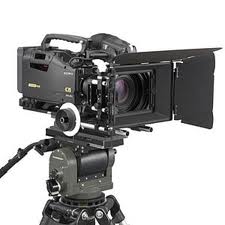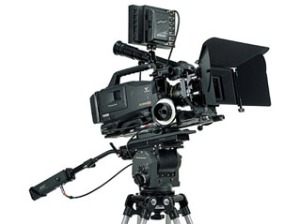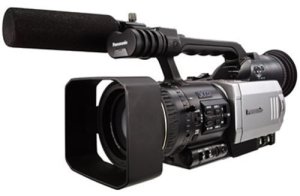Before digital video matured into a viable format, the preferred method for low budget film makers to independently create motion pictures consisted of getting their hands on a camera that shot actual film. Expensive and time consuming, but wonderful and lovely all the same.
There are countless tales of aspiring directors making their way through the treacherous gauntlet that is the task of shooting a low budget movie on film. Legends have grown around the experiences of Kevin Smith, Robert Rodriguez, Christopher Nolan, Darren Aronofsky and many more. Below are the links for the stories behind the production of Clerks, El Mariachi, The Following, and Pi.
http://en.wikipedia.org/wiki/Clerks#Production
http://en.wikipedia.org/wiki/El_Mariachi#Production
http://en.wikipedia.org/wiki/Following#Production
http://en.wikipedia.org/wiki/Pi_(film)#Production
In the 90s, when Smith, Rodriguez, Nolan and Aronofsky were hard at work on these iconic examples of low budget cinema, prosumer digital video cameras consisted of High 8 and Mini DV models – It goes without saying, these cameras were nowhere in the league of film and the look that came out of them screamed home video. These digital relics of the 1990s were lacking in 6 key elements that give film it’s incredible appeal:
1. Frame rate. Film is shot at 24 frames per second.
2. Color rendition. Even Super 16 film has wonderful, deep color.
3. Dynamic Range. Film is superior in the way it handles the range from highlight to shadow, especially the manner in which highlights roll off.
4. Depth of field. Super 35 and Super 16 film allow for lenses that can easily achieve shallow dof.
5. Development. During processing, film responds in a pleasing way to careful manipulation.
6. Resolution. Super 35 is extremely detailed and rich.
In the summer of 1999, while indie directors continued to dream of better things to come, George Lucas helped to change the landscape by announcing he would shoot Star Wars Episode II 100% digitally. The camera chosen was a “Panavised” Sony HDW-F900. It was HD, shot at 24P, and had advanced gamma features/color controls. While certainly no inexpensive piece of gear, it helped to erase many of the conceptions about digital imaging and closed the gap between film and video. Meanwhile, in 2001- 2002 Panasonic was developing it’s own game changing digital video camera – the Varicam AJ HDC27V/F. It had variable frame rates and 1080 x 720 resolution. Once again, this was a very expensive tool, but the technology featured in the Varicam would soon trickle way down to one of the most revolutionary cameras in indie film maker history. The Panasonic DVX100.
As 2002 came to a close Panasonic announced the incredible DVX100. It shot 24P, featured cinema gamma profiles, xlr audio, and created images that were different than standard video. It was the very first camera anywhere near it’s price range to shoot the frame rate of film – that alone was enough to spark the creative fire of many independent film makers.
Pictured from left upper row- Sony HDW F900, Panasonic AJ HDC27V, Lower row – Panasonic DVX100



